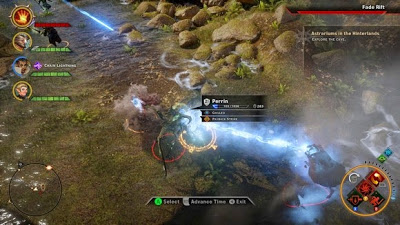

At first glance, Hohokum is painfully simple. Your input is limited to steering a flying, multicolored snake-thing (called the Long Mover) through 2D environments, triggering strange reactions from objects and creatures as you float past. Nothing poses any real threat--at least not to you. There's no sense of urgency, and your central goal is to find other cosmic snakes in what appears to be a transdimensional game of hide-and-seek. It's almost like an interactive pop-up book, although that description doesn't do justice to Hohokum's captivating weirdness and its secretly inventive gameplay.
The bare-bones simplicity of piloting the Long Mover actually gives Hohokum a lot of flexibility to experiment with different play styles. The end result is a sprawling series of vibrantly wide-open levels with catchy interactive soundtracks and unique objectives. At first, exploration is its own reward; you're surrounded by bizarre things to investigate, each of which might suddenly transform into a crucial element for completing a level, and poking at them to see what they'll do is fascinating.
In one instance, you'll find yourself ferrying colorful little people around a huge, floating carnival. It's hypnotically fun, especially once you figure out how to turn on the rides (sometimes with lethal results for your passengers). Another level simply sets you floating past what seems to be a vast, terraced mountainside farm, where you can make plants grow and scare silhouetted workers into hiding. It’s weirdly sedate, and really doesn’t seem like much of a level at first--until you find the one splash of out-of-place color that holds the key to a puzzle.
It's fun to fly the Long Mover around in twisting arcs--especially on PS4, where you can use the touchpad to make him spasm in erratic, music-generating, and utterly useless loops. (Sadly, the feature isn't present on Vita, which seems odd given its dual touch-sensitive surfaces.)
Some stages even seem empty, as if there's nothing you can interact with that'll push things forward--but that's just a ruse. Each of the 14 or so stages contains a puzzle, and the first step in solving it is often to simply figure out what that puzzle is. This isn’t as difficult as it might sound; with a little prodding and exploration, you'll trigger an event or reveal a visual clue that'll point you in the right direction. Some puzzles are easier to find than others, and a few can be solved simply by wandering into a not-so-hidden room, or dragging stars around to illuminate a constellation. These shorter challenges aren't exactly rewarding, but their stages usually make up for it with distractions that combine music and visuals in interesting ways. You know, like harmonizing lizard creatures that sing as you float through their twangable rubber-band surroundings.
Those simple stages are really just palate-cleansers for the bigger, more complicated levels. The multi-part puzzles here offer some of Hohokum’s most memorably enjoyable moments, and I always felt a little surge of pride whenever I pieced together a solution by experimenting with my surroundings. Working out a time-travel problem to save a doomed waterpark, for example, is weirdly satisfying, as is helping vacuum-snouted creatures harvest blobs of filthy-looking yellow goop. And that’s to say nothing of the simple thrill of recruiting fruit-carrying primates to act as my gunners during what’s probably the most relaxing bullet-hell shooter sequence I’ve ever played.
In spite of the game’s meandering structure, you’ll get a clear signal that you're "finished" with a stage when one of your snakey friends comes out of hiding (accompanied by a goofy, wordless cutscene). But even then, there are usually secrets left to uncover, mostly in the form of 146 eyes hidden throughout the game (and helpfully tallied on the pause screen). They don't have any affect on your playthrough, but are fun to hunt down if you're into collectibles.
Hohokum's mix of openness and opaqueness is a big part of its fun, but there’s a dark side to it. There's no clear linearity to the levels; each one links to a couple of others via magic portals, and you're free to enter or leave them at any time--but it can be tough to keep track of where those portals are and where they lead. Toward the end of Hohokum's roughly six-hour runtime, you'll likely find yourself backtracking through multiple stages in hopes of discovering one you haven't yet visited. Factor in that some levels look similar when viewed through portals, and it starts to feel like you’re going in circles, which gets tedious fast. Thankfully, that feeling evaporates when you finally emerge into new surroundings.




 Is it time to make the jump to next-gen?
Is it time to make the jump to next-gen? Spider-Man: Edge of Time Walkthrough Video Guide
Spider-Man: Edge of Time Walkthrough Video Guide Middle Earth: Shadow of Mordor Wiki – Everything you need to know about the game .
Middle Earth: Shadow of Mordor Wiki – Everything you need to know about the game . Pokemon Soul Silver Guide
Pokemon Soul Silver Guide The Only Tool You'll Ever Need When Booking a Place to Stay
The Only Tool You'll Ever Need When Booking a Place to Stay